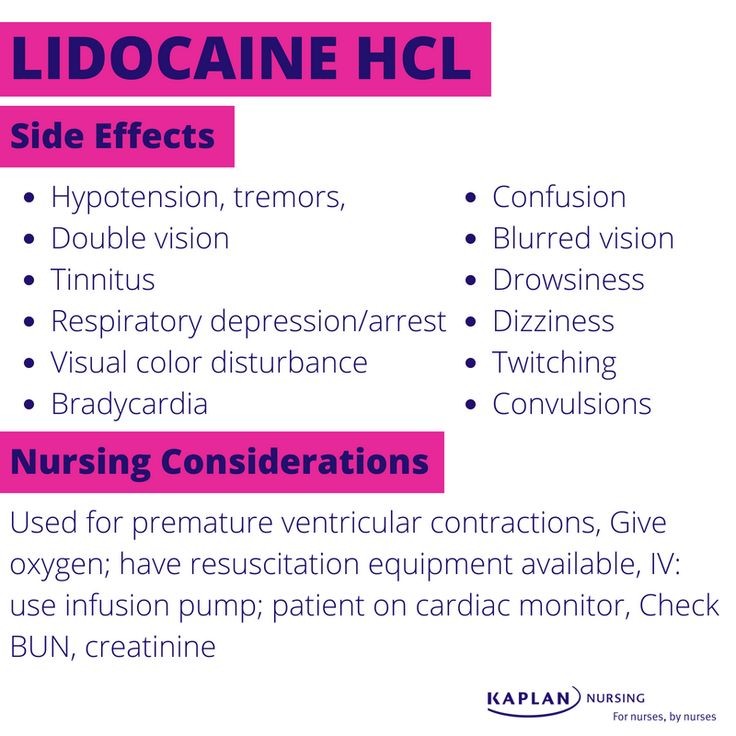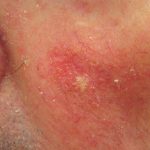
Contents
- 1 Side Effects of EMLA (lidocaine and prilocaine)
- 1.1 Tired After Surgery: 7 Reasons
- 1.2 Success Rate of Wet Macular Degeneration Injection
- 1.3 Bicipital Tendon Injection: What Is It?
- 1.4 Acromioclavicular Joint Injection: What Is It?
- 1.5 Do Collagen Injections Hurt?
Side Effects of EMLA (lidocaine and prilocaine)
EMLA is a topical anesthetic cream used on normal intact skin and genital mucous areas before minor procedures.
EMLA blocks pain receptors in nerve endings by interrupting the transfer of sodium ions across nerve cell membranes.
Common side effects of EMLA include:
- redness at the application site
- pain
- burning
- paleness
- swelling
- altered temperature sensation
Serious and rare side effects of EMLA include:
- shock
- central nervous system depression
- hypersensitivity reactions
- low blood pressure (hypotension)
EMLA should be used with caution when taking anti-arrhythmic drugs due to additive effects on heart rate and rhythm. Prilocaine may contribute to methemoglobin formation when used with other drugs known to cause methemoglobinemia.
There are no adequate studies on the use of EMLA in pregnant women. Caution should be exercised before using EMLA in breastfeeding mothers.
What are the side effects of EMLA (lidocaine and prilocaine)?
Common side effects of lidocaine and prilocaine include:
- redness at the application site
- pain
- burning
- paleness
- edema
- altered temperature sensation
Other rare side effects include:
- shock
- central nervous system depression
- hypersensitivity reactions
- low blood pressure (hypotension)
EMLA (lidocaine and prilocaine) side effects for healthcare professionals
Localized Reactions
After treatment with EMLA Cream, the skin at the treatment site may develop redness, edema, or abnormal sensation. Rare cases of purpuric or petechial reactions at the application site have been reported. Hyperpigmentation following the use of EMLA Cream has also been reported.
In clinical studies on intact skin, local reactions were noted in 56% of patients and were generally mild and transient. Serious reactions ascribed to EMLA Cream were not reported.
Blistering on the foreskin has been reported in neonates about to undergo circumcision.
Local effects observed in trials on intact skin included:
- paleness (pallor or blanching) 37%
- redness (erythema) 30%
- alterations in temperature sensations 7%
- edema 6%
- itching 2% and rash < 1%
In clinical studies on genital mucous membranes, application site reactions were noted in 41% of patients and were usually mild and transient.
The most common application site reactions were:
- redness (21%)
- burning sensation (17%)
- edema (10%)
Allergic Reactions
- Allergic and anaphylactoid reactions associated with lidocaine or prilocaine can occur.
- They are characterized by urticaria, angioedema, bronchospasm, and shock.
Systemic (Dose Related) Reactions
Systemic adverse reactions following appropriate use of EMLA Cream are unlikely. Systemic adverse effects of lidocaine and/or prilocaine are similar to those observed with other amide local anesthetic agents, including CNS excitation and/or depression, cardiovascular manifestations, and respiratory depression and arrest.
Excitatory CNS reactions may be brief or nonexistent. Cardiovascular manifestations may include bradycardia, hypotension, and cardiovascular collapse.
What drugs interact with EMLA (lidocaine and prilocaine)?
EMLA Cream should be used with caution in patients receiving Class I antiarrhythmic drugs, as the toxic effects are additive and potentially synergistic.
Patients receiving local anesthetics are at increased risk of developing methemoglobinemia when exposed to certain drugs, including other local anesthetics. Lidocaine/prilocaine interaction studies with class III anti-arrhythmic drugs have not been performed, but caution is advised. Cumulative doses of lidocaine/prilocaine from all formulations must be considered.
Summary
EMLA is a topical anesthetic cream used on normal intact skin and genital mucous areas before minor procedures. Common side effects of EMLA include redness, pain, burning, paleness, swelling, and altered temperature sensation. There are no adequate studies on the use of EMLA in pregnant women. Caution should be exercised before using EMLA in breastfeeding mothers.
Related Disease Conditions
Tired After Surgery: 7 Reasons
Postsurgical fatigue is normal and can be caused by depression, stress, anxiety, sleep deficits, medications, anemia, blood loss, fasting, loss of electrolytes and minerals, exercise, physical exertion, aging, and overall health status.
Success Rate of Wet Macular Degeneration Injection
Intraocular injections for wet macular degeneration have shown a definite success. After one year of therapy, vision was improved by 25-34% compared to 5% in those who did not receive intraocular injections.
Bicipital Tendon Injection: What Is It?
A bicipital tendon injection involves injecting corticosteroids into the tendon to relieve pain and inflammation.
Acromioclavicular Joint Injection: What Is It?
An acromioclavicular joint injection is a method to treat injuries or pain in the joint by injecting corticosteroids.
Do Collagen Injections Hurt?
Bellafill, a USFDA-approved collagen filler, contains lidocaine along with collagen and special beads, minimizing pain during the procedure.


